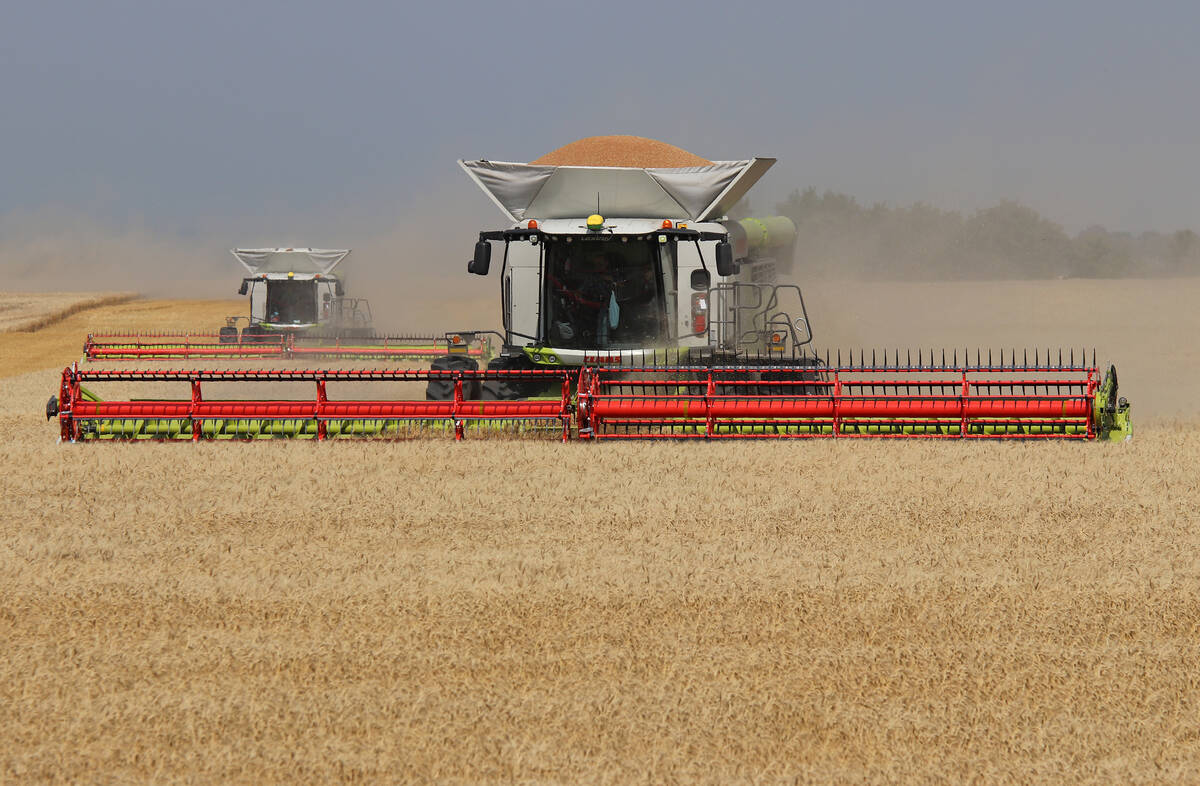There’s something lying under Geoff Legge’s land that he thinks is going to make him a bit richer.
It’s not oil or gold. It’s heat and coolness.![]()
But it won’t make him money for quite some time.
The Rosetown, Sask., farmer is building a new farmhouse for his family, and has decided to install a geothermal system that will provide heat in the winter and cooling in the summer.
Read Also

China’s grain imports have slumped big-time
China purchased just over 20 million tonnes of wheat, corn, barley and sorghum last year, that is well below the 60 million tonnes purchased in 2021-22.
“My great-grandfather’s house, where we’ve been living, has been there for about 100 years,” said Legge about why he decided to go with a geothermal system rather than a high efficiency natural gas furnace for his new home.
“We decided we wanted to build a house that would be there for a long time too. So you might as well build something that’s going to be energy efficient.
“The people who take over the farm eventually are going to want that.”
Legge is 35 and says any investment he makes for his farm has many years in which to pay him back.
Geothermal systems operate by circulating liquid in pipes buried deep in the soil, where the temperature is constant and comfortable, through a house and back out to the soil. The loop is powered by electricity.
The effect is to warm the building in winter and cool it in summer.
There is a cost for the electricity, but the heat and cooling are free because they are provided by the planet itself.
The system Legge has had installed for his new house was trenched-in and was the first part of the construction project.
He thinks it’s going to cost him about $15,000 more than the cost of installing a high efficiency furnace and an air conditioning system, but he expects to see savings over the long run.
He’d rather not gamble on the price of natural gas over the lifetime of the house.
“You can’t right now put a price on natural gas in the future.
“One thing’s for sure: the world’s not making any more of it.”
The federal government and various provincial governments offer incentives for people to retrofit older homes to geothermal, but the amount of subsidy depends on the particular situation of the building retrofitted.
Lindsay Quick of Solar Outpost in Saskatoon, the company that is installing Legge’s system, said the subsidies help farmers who are off the natural gas system and have old fuel-burning furnaces they want to replace.
“A lot of farming customers we talk to have older homesteads with oil (and) diesel or propane heat,” said Quick.
“These are becoming an increasingly more expensive way for people to heat their homes and with the lucrative government grants available for situations like this, it’s making it more affordable to switch over.”
For people like Legge, however, the subsidies get complicated because his farm is already served by natural gas. He’s also checking out whether the subsidies apply to a new construction like his.
In Saskatchewan, for example, homes being retrofitted can receive up to $7,000 in grants, with an equal portion from the federal and provincial governments. But if a home already receives natural gas, it probably won’t receive the province’s $3,500 unless the home gets its electricity for the geothermal system from an “on-site renewable energy source large enough to offset the estimated increased electrical load.”
That’s because in Saskatchewan most of the electricity is produced from coal, which is generally considered dirty, while natural gas is considered clean.
Burning less natural gas to heat a home is positive, geothermal promoters say, but powering the system with coal-based electricity reduces the environmental gain.
Legge said he’s considering installing a windmill to produce clean energy to power his geothermal system.
Each province’s geothermal subsidies are different, so farmers need to check them out before assuming how much they would receive.
Quick said the average cost of a new geothermal system is $22,000, so the $7,000 in government grants in Saskatchewan reduces the cost by almost a third.
Legge said he’s going to be happy to have geothermal air conditioning in the summers. Quick said many older farm homes don’t have any air conditioning now.
“This is often the first time these older farm homes have been able to have that luxury,” said Quick.
“It’s a great option with the wives, I know.”















